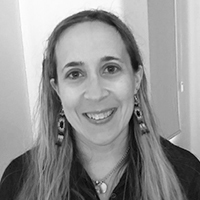Question
What is the clinical impact you see of cranial deformities?
Answer
Clinically, there are delayed developmental milestones. There is also a shift of cortical structures. They have been shown to have lower scores in receptive language and lower scores on the fine motor subscales. Children with cranial deformities have an elevated risk of auditory processing disorders and an elevated risk of visual field abnormalities. Delayed psychomotor development is possible. Asymmetries of facial features with a shift in the mandible occur and often, they've shown an increased prevalence of abnormal dentition.
Infants have shown lower scores on the Bayley exam than their unaffected peers. They have been shown to not be able to roll, sit up, crawl or lift their head at the same time as their peers. They often also have an increased dislike for tummy time. Motor skills were weaker and mostly cranial deformities have become a diagnostic marker for developmental issues. Motor asymmetries with spinal extensors and retractors are common. The therapist needs to be aware of these, treat, and regularly follow up. Flattening brain structures can affect development such as the cerebellar vermis and the shortening of the corpus callosum. Coordination with early intervention and follow up clinics for speech therapy assessments we have found are very important. We often utilize our cohorts as well to make sure that they at least do an assessment on these babies and they follow up in three, six, nine-month intervals to determine their progress. Again, the Bayley has shown fine motor scores to be lower compared to their peers so it is very important to use a multi-disciplinary or transdisciplinary approach for therapy. We see increased auditory processing dysfunction and a delay in vision with possible depth perception issues or tracking issues due to the disorder in the development of pathways affected as early as 35 weeks in the NICU. We follow up and coordinate not only with our current neonatologist, but we work very closely with our ophthalmologist who comes in weekly. We continue to follow up on these developing babies. It can lead to further sensory issues as well when they're older. Eyeglasses have shown to be more frequently used in kids with cranial deformations. However, due to their ear asymmetries, often times they have difficulties feeding. There could be different behavior in school-age children such as anxiety or attention deficit disorder or even Attention Deficit Hyperactivity Disorder. Fidgeting or repetitive movements as they get older can be seen too. This can lead to feeding disorders with difficulty chewing when there's a shift in the mandible. TMJ has often been found along with this and a cross bite or underbite demonstrated.
